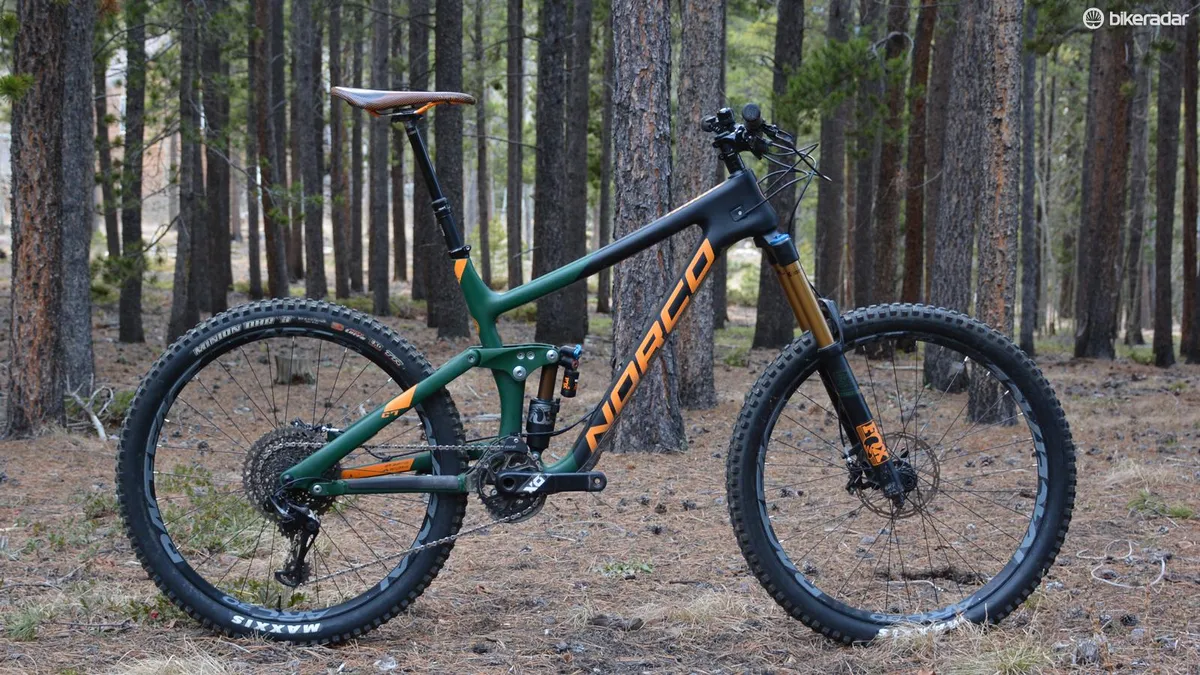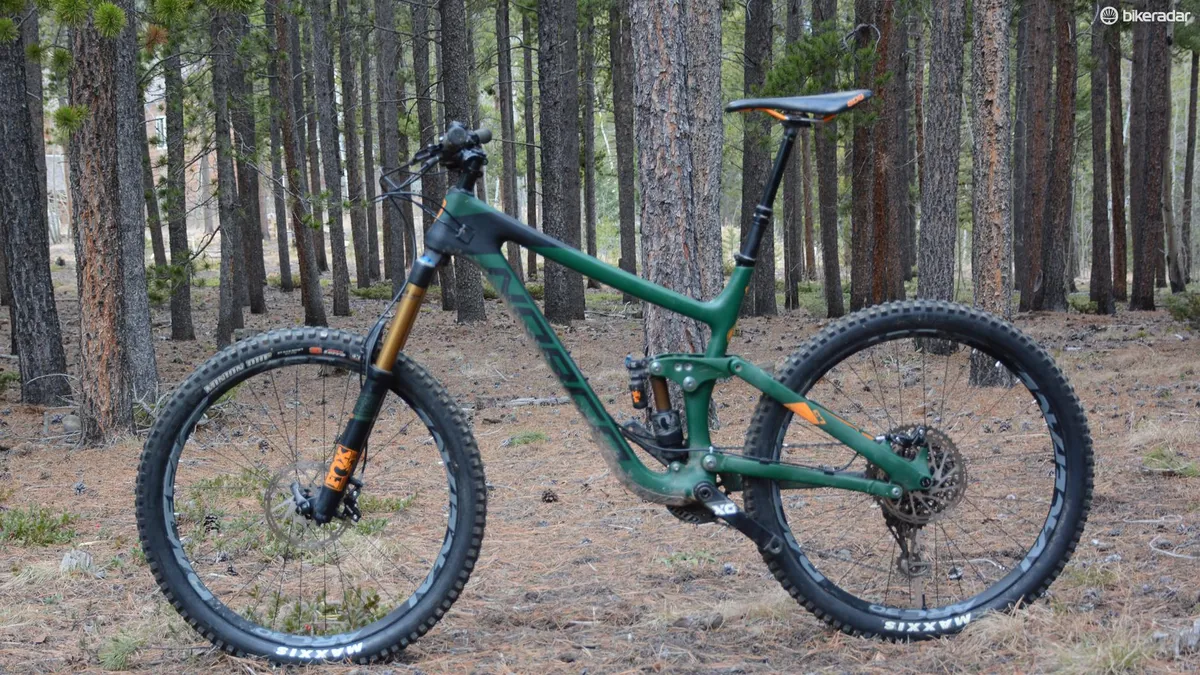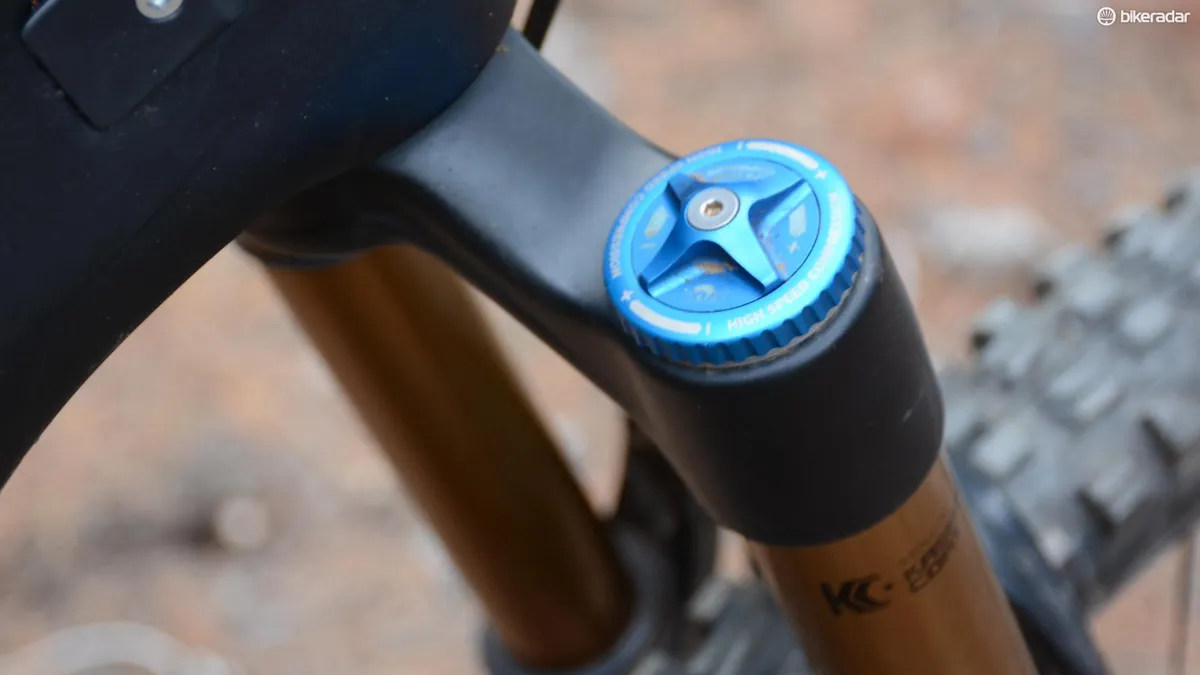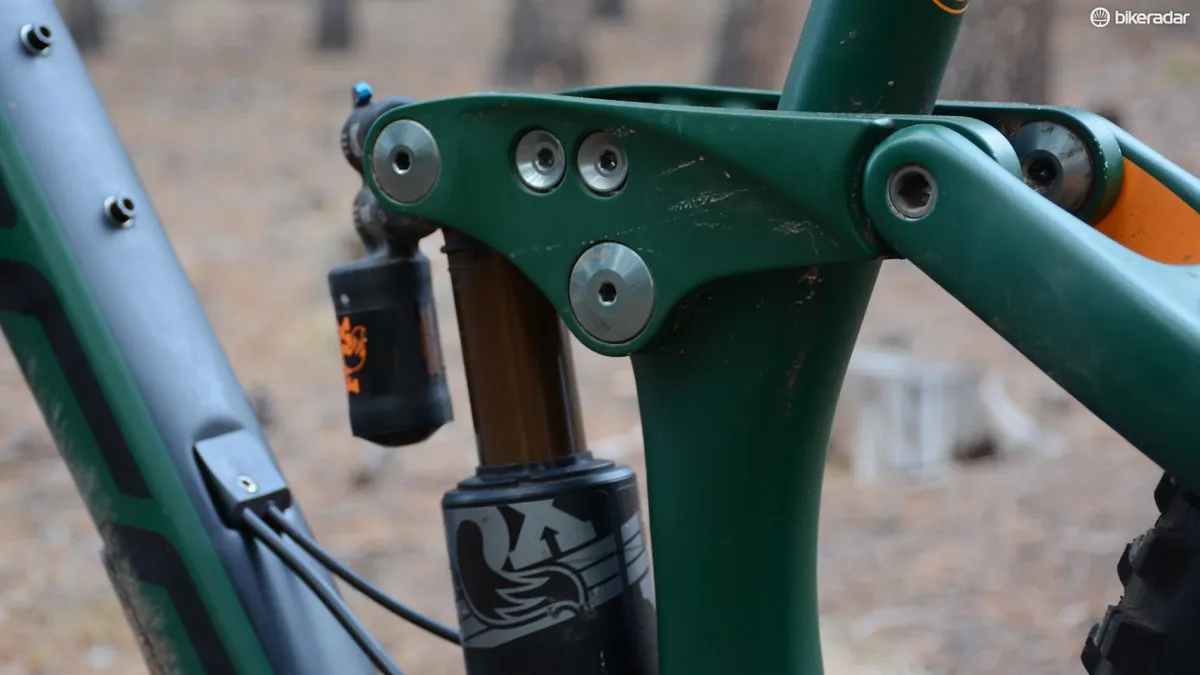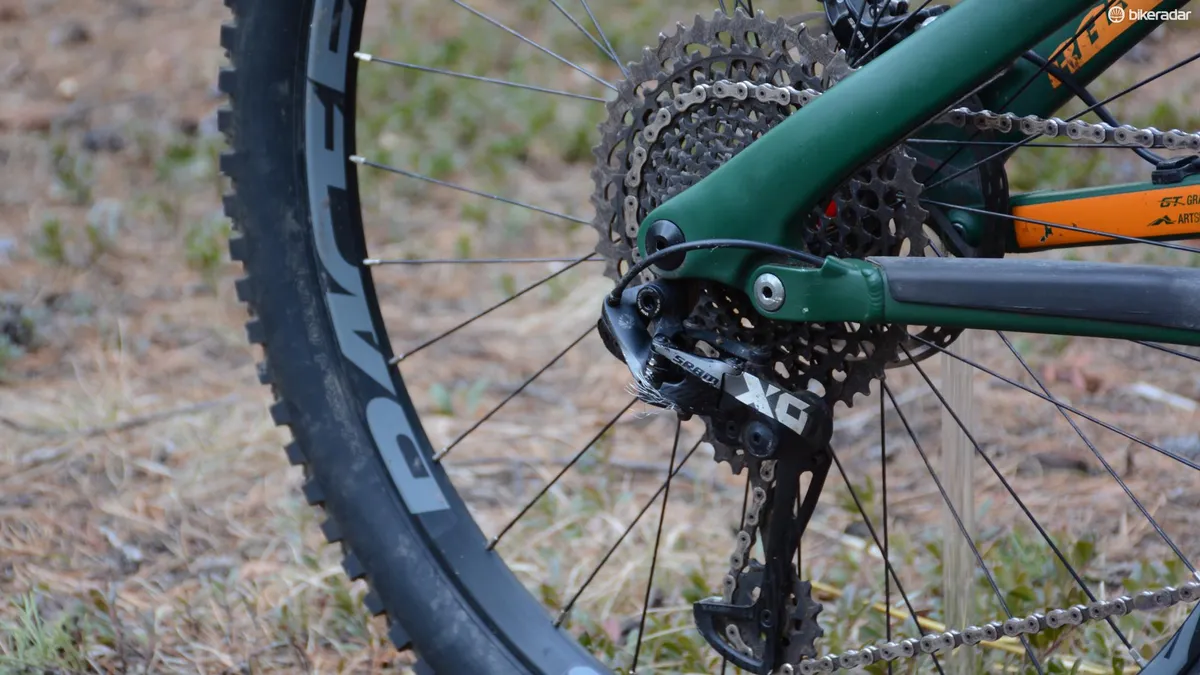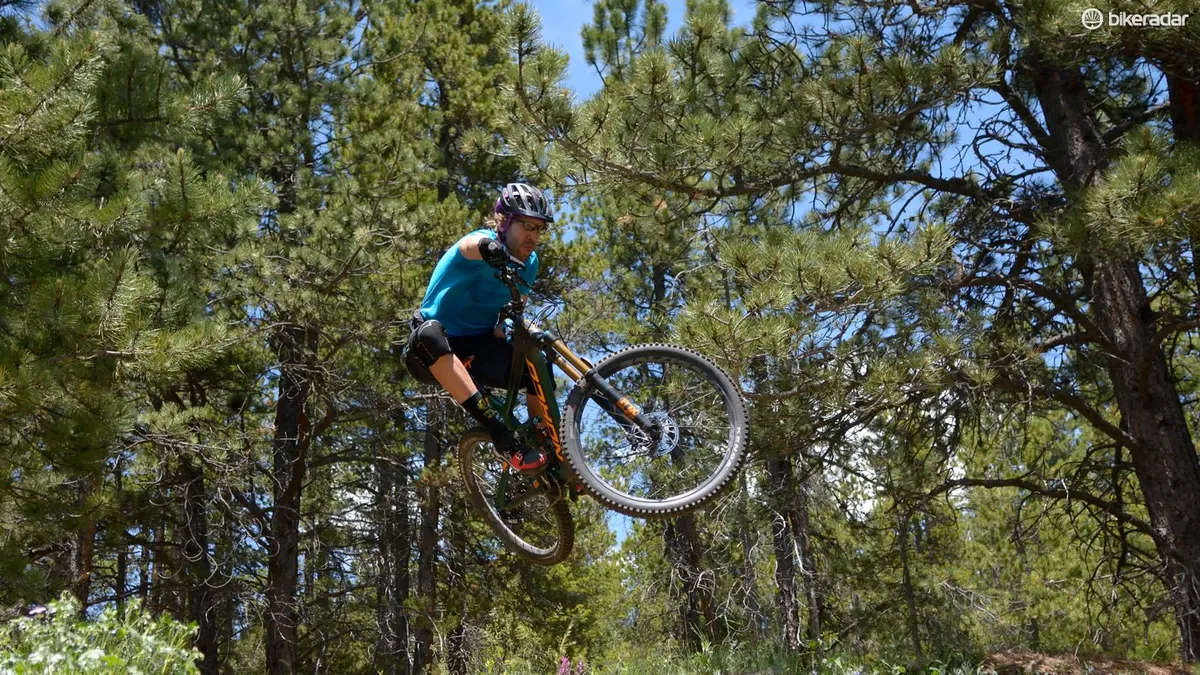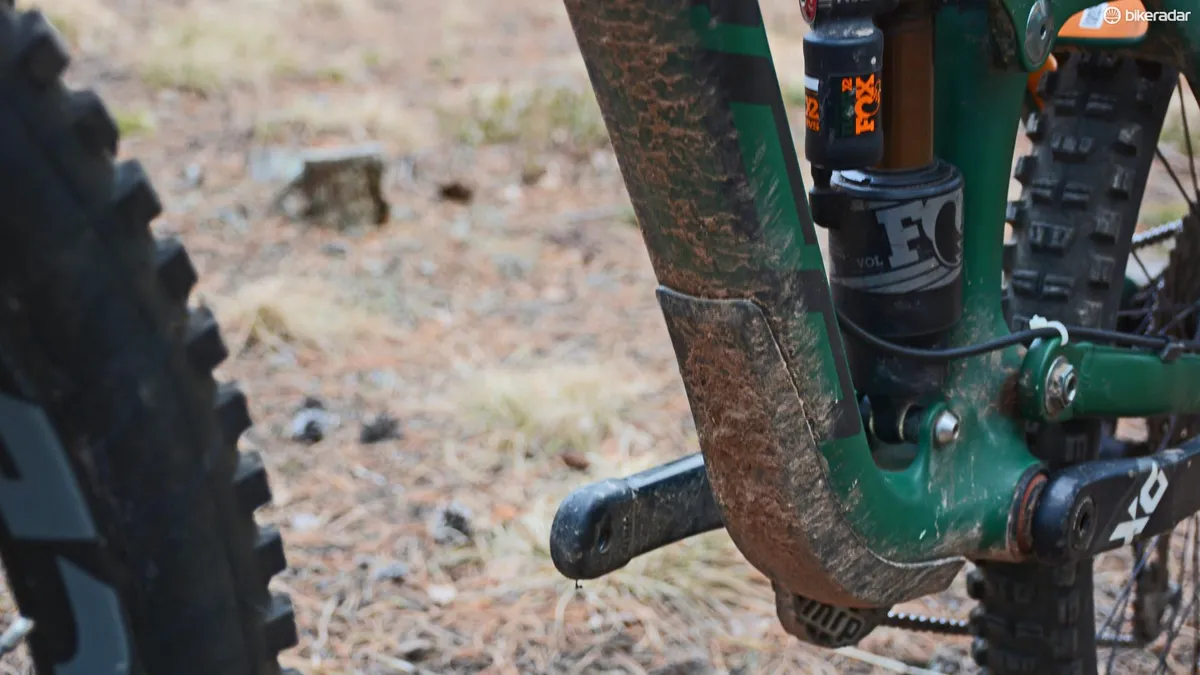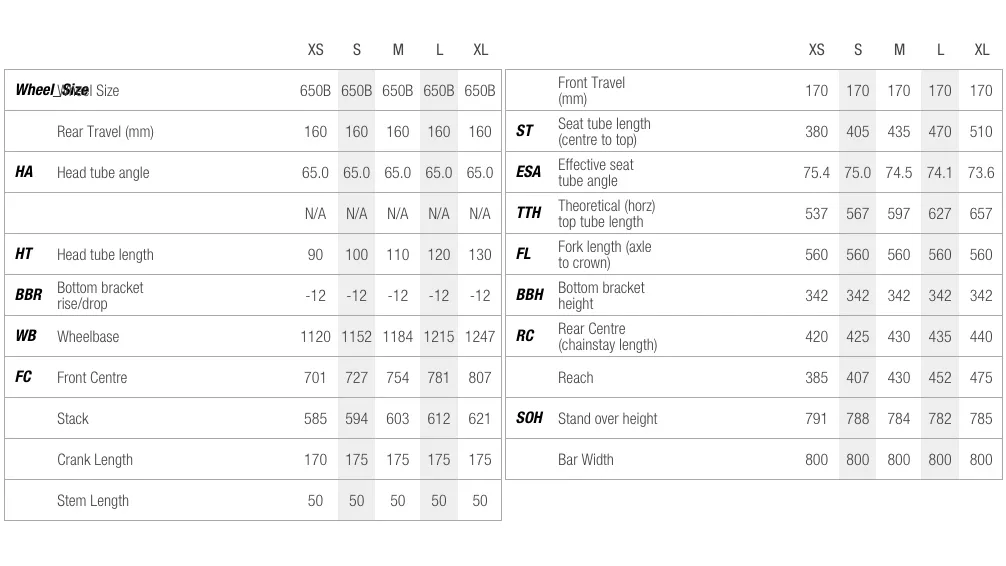For 2017, Norco updated its Range line of enduro bikes with both the 27.5in and 29in versions following the standard course of going longer, lower and slacker. The Range C7.1 is the top of the 27.5-inch wheeled family and is about as enduro-ready as bikes come.
Norco Range C 7.1 features
- SmoothCore carbon frame with ArmorLite resin
- ART rear suspension, 160mm
- Trunnion-mount, metric Fox X2 rear shock
- Enduro Max bearings throughout
- Gizmo internal cable routing
- Boost axle spacing front and rear
- Actual weight: 13.57kg / 29.92lbs
Downhill crusher

I took the Range C7.1 on a huge variety of terrain — XC singletrack, high alpine mining roads, desert rocks, blown-out moto tracks and bike park chunder.
My best ride came after a load of rain, which had caused the trail to lose a lot of its dirt, exposing even more rocks. With the dirt slid down the hill, jagged rock edges were everywhere, much more so than usual. Despite the new challenge, the Range really came into its own here.

It floated over the chunky, square-edge rocks and loaded smoothly in and out of turns. It saved my bacon numerous times on misjudged takeoffs and the subsequent over shot landings. The Float X2 truly was impressive on how closely it mimicked the ultra-soft beginning stroke of a coil. From there, combined with Norco's ART suspension, it was equally accomplished with loads of support.
Norco claims the Range's updated rear suspension has more progression than the previous model. I'm believing it. Having tossed the bike into some downright repugnant lines and off some stupid stuff, I think I only it heard it complain with a bottoming-out thwack once.
On the front end things went very well, too. The big 170mm Fox 36 fork slipped through all its travel with nary a clunk or clank when nosing into things I very well shouldn't have been nosing into. It's a class-leading fork for all the right reasons — stiff chassis, excellent stroke, and loads of adjustment.
But most of the credit goes to the updated geometry and excellent frame.
The longer rear centre (which Norco calls Gravity Tune) provided a noticeable improvement in front and rear traction — on the size Large test bike, the stays are 435mm long. It delivered a sense of being much more centred within the bike.
Bikes with super-short rear ends can feel like they're pivoting off the rear wheel, which can be hugely fun, but isn't the fastest or smoothest way to get around a corner. Norco are one of the few brands to adjust the chainstay length, depending on the frame size, to give this impeccably balanced feel — the stays lengthen by 5mm for each jump in frame size.

The centred geometry combined with the slack 65 head angle lent an assured feeling everywhere, but especially when pointed down ugly chutes.
The 452mm reach, 1,215mm wheelbase, and mega-wide 800mm Race Face carbon bars also made going fast really fun, and really easy.
The 342mm bottom bracket height, with 12mm BB drop, bestowed a carve-happy mood, placing my weight low in the chassis. It all made hitting mach speeds much more controlled and less hectic.
And it's stiff. Not in a bone-rattling way, more in a precision, line-sniping way. It rarely, if ever, got knocked off line and the wheels always felt like they were following one another, meaning that the frame lacked that twisting in the middle that can plague lesser full-suss rigs.
Regarding the frame's strength Norco's senior design engineer Owen Pemberton said, "We took everything we learned from the Aurum (downhill bike), which is the strongest bike we’d ever made, and employed it on the new Range Carbon.”
It's a no-brainer to see why enduro racers demand a bike like this.
On the ups
Surprisingly with all that downhill prowess, climbing wasn't unbearable. It's not an uphill rocket but it's entirely capable of scaling some serious terrain.
The Firm pedal setting on the Float X2 shock made a noticeable difference in quieting any bobbing, but on really rough, technical terrain, it provided too much low-speed compression. As a result the rear tyre traction suffered. Toggling the Firm mode lever was easy as it sat right at the top of the shock.
On the really steep stuff, there was simply no way of getting around the slack head angle and big 170mm fork. Weighting the front end wasn't much of an option since the stem spans a mere 50mm. Additionally, the 74.1 seat angle on the size Large I tested wasn't going to win any new school geometry awards. Plus, the 342mm bottom bracket height was on the low end and I smacked my fair share of pedals.
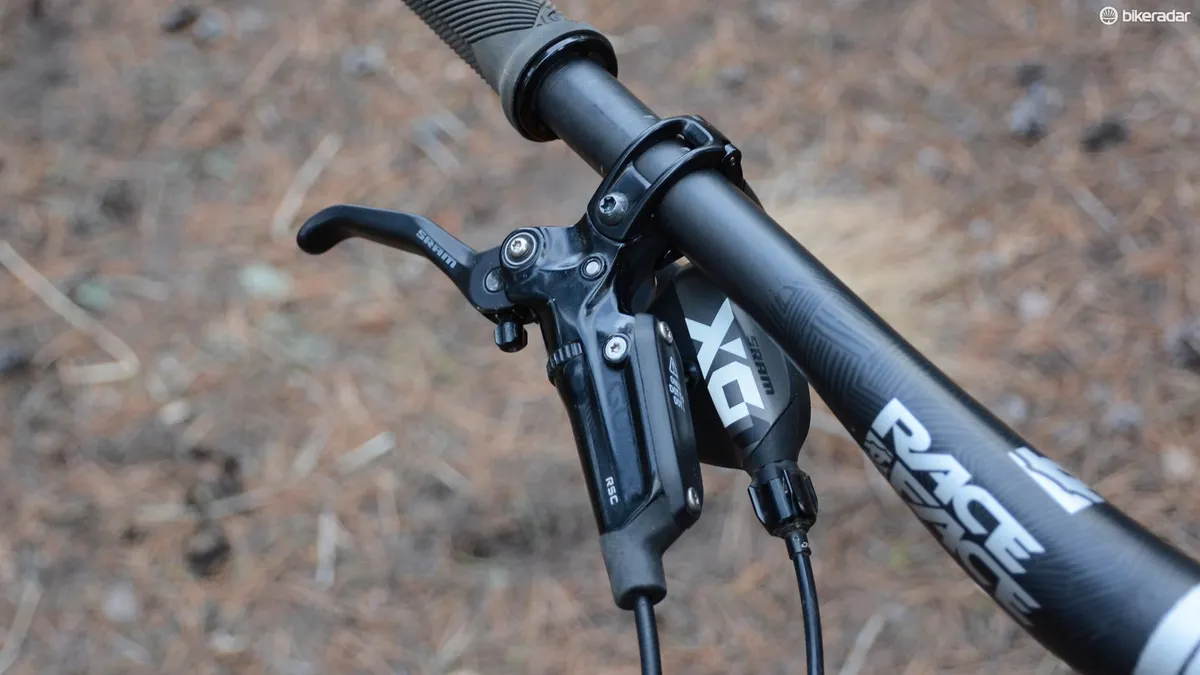
The Range seemed happiest leaving the go-go-go head-down-style behind and settling in and casually rolling to the top. But that makes sense — it's a big, slack enduro bike and when racing the transfer stages aren't timed.
The right spec for enduro smashing
Recent years have finally seen product managers outfitting bikes with proper equipment OEM. The Range C7.1 was a shining example. With one exception (noted below) there wasn't a single component I was itching to swap out. The bike was dialled for enduro.
The pairing of a Fox 36 fork and Float X2 shock was incredible. I experimented with tons of adjustments, and even employed a ShockWiz just for fun, to get the suspension doing what I wanted. From Velcro-like traction to poppy, playful sending, the Fox dampers' vast tuning scope was a near-perfect match for the Range.
As was SRAM's 12-speed X01 Eagle drivetrain. I was pleased to see a 34T chainring on the carbon cranks. A touch more top-end speed was welcome.

The Guide RSC disc brakes matched the Range's intent quite nicely with good modulation and decent power when things got hectic. I liked the 180mm rotor size as well as the clean, adapter-free 180mm post mounts on the fork and seatstay.
A 150mm Reverb dropper was fitted. Being tall, I wouldn't have complained about a 170mm dropper, but some riders might not be able to get away with that tall a post.
As mentioned earlier, a 50mm Race Face Turbine R stem and SixC 800mm wide bar were on board. The bar clamp was 35mm and the extra girth could be felt. It was especially disagreeable with the thin Race Face Love Handle lock-on grips. I swapped the grips for something with a bit of cushioning. My trails can be unrelenting in their harshness and my hands are feeling old. I need a bit of give somewhere.
Needs better rims
The C7.1 is the top of the three tiered Range pile and it has the specs to show for it, mostly. For a bike costing north of $7,000, we're seeing competitors specing carbon rims at this price point — is that something we should expect from Norco also? Kudos to Norco for spec'ing DT Swiss' legendary 240 hubs front and rear and throwing Maxxis' 2.5" (f) / 2.4" (r) Wide Trail Minions on, but the Race Face Arc30 aluminium rims are too soft and weak for what this bike is capable of.
On the my second day at the bike park, I managed to knock the rear wheel quite significantly out of true and some of the spokes lost tension. I didn't crash, or even flat the tyre, but I was chasing a pro rider so the speeds were high. Even with that, I don't recall ever having a major 'ohhh crap!' moment to warrant a wheel getting bunged up so badly. If this was a multi-stage enduro race, this would have been a real issue.
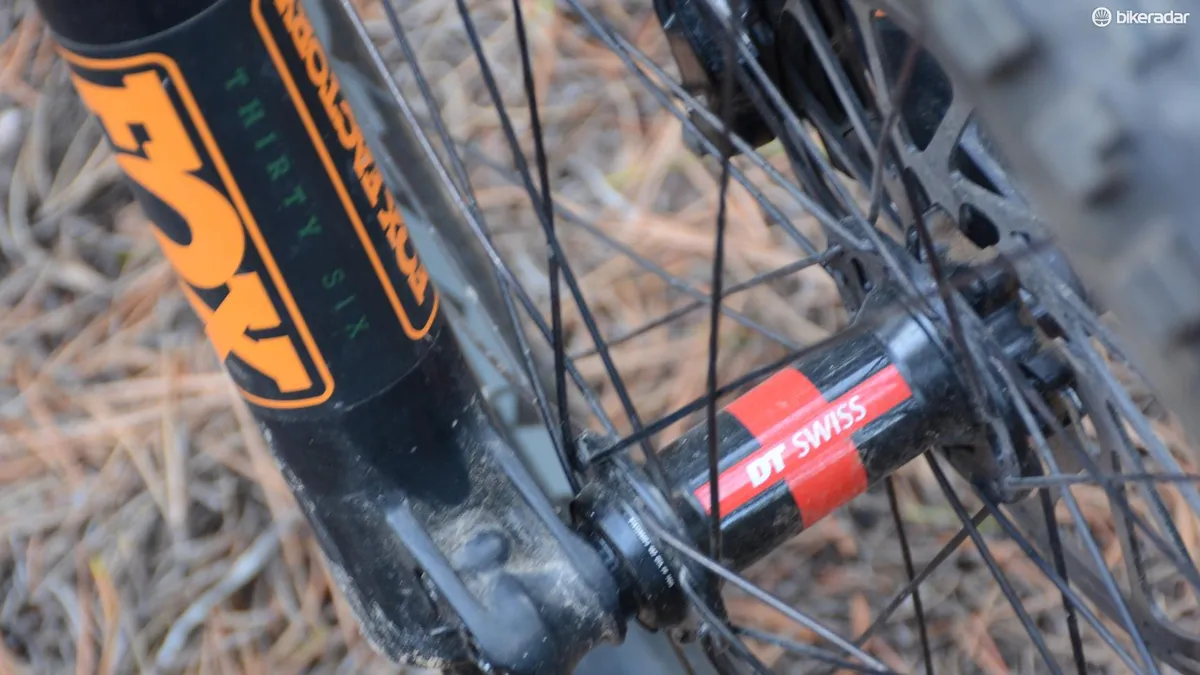
I acknowledge some riders and racers prefer a softer, more forgiving alloy rim, and that with the legendary 240 hubs a wheel rebuild (rather than buying a whole new wheel) is absolutely warranted. But with the stiff carbon frame and the range of tuning from the Fox dampers, carbon hoops could take this bike to the next level.
For the second half of the test I did put on some Reynolds' carbon Enduro wheels and it made the already very impressive Range decidedly even more so. With the stiffer, more precise carbon hoops, the suspension seemed to work and track better due to less deflection and more energy being transmitted through the wheels to the suspension dampers. There was also less wiggle or squirm through the corners, which was surprising given how well the Range chassis tracks.
The bottom line on the Norco Range C7.1
This is what a modern enduro bike should be. When ridden hard and fast, it instills confidence. It rewards aggressive riding yet can still be pedalled to the top without feeling like you're going to explode. The suspension and drivetrain leave little room for want. It's an expensive beast, but it's doubtful it'll ever be the weak link in your riding.
If you're coming from a downhill or even motocross background, the Range C7.1 will suit you well. But it should be noted that like most big bikes, it can feel a bit sloppy and the front end will push out wide if you're not engaged, or fatigue has made you more of a passenger than a pilot.
The limits are way out there on this bike, the harder you ride it, the better it gets.
